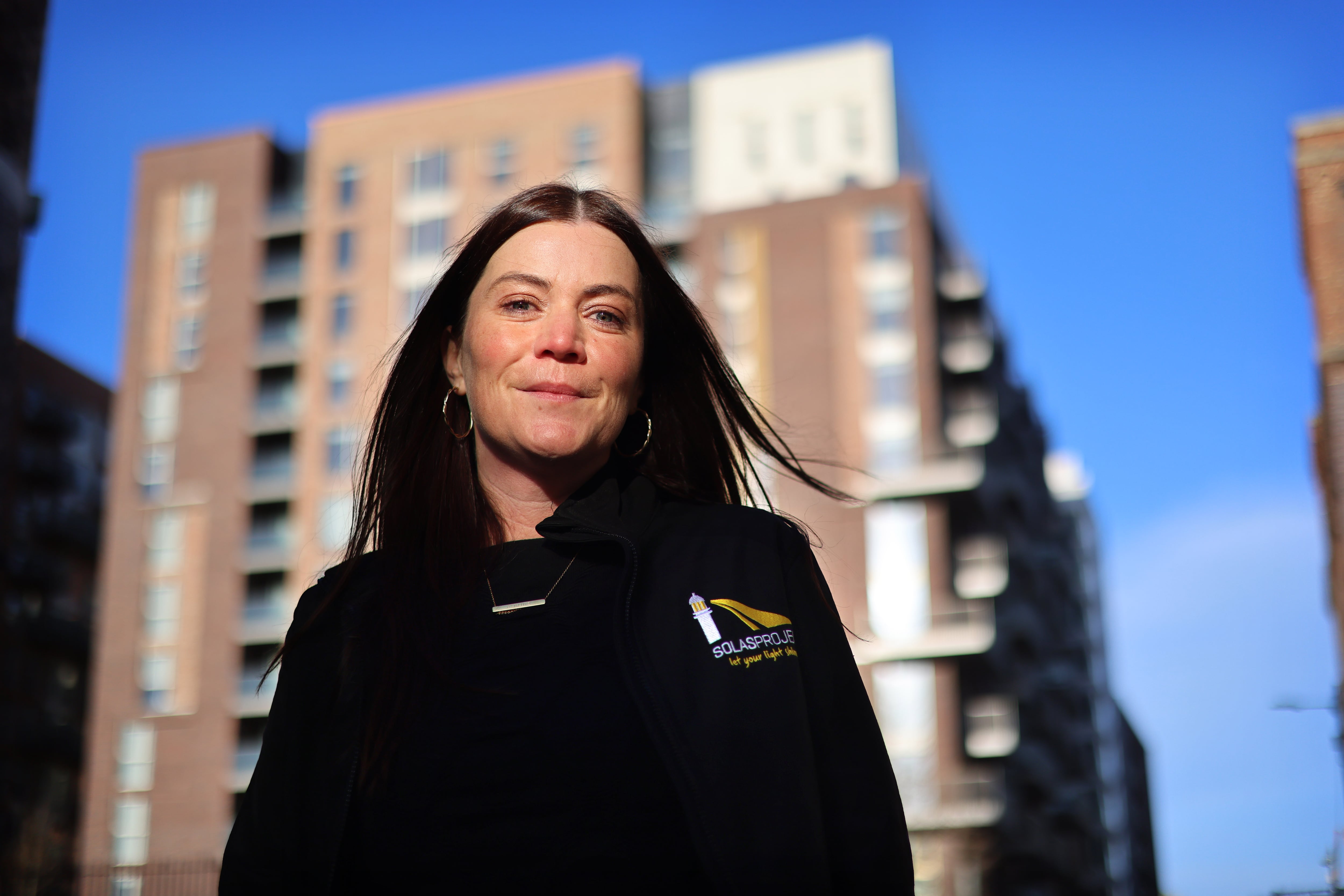The Government has identified more than 30 large buildings for use as accommodation for asylum seekers against the backdrop of ongoing fallout from violent clashes in Coolock this week.
The requirement to open more accommodation centres means the Coalition faces potentially dozens more flashpoints amid opposition from locals fanned by online networks and far right activists.
It is understood that the buildings, which are expected to be large commercial or office units, were identified following an initial assessment of about 70 projects submitted to a call for expressions of interest to supply accommodation.
The number suitable for use may ultimately be less than the figure considered potentially usable after the first assessment, and is subject to contract negotiations, Government sources said.
RM Block
Minister for Integration Roderic O’Gorman has promised a move towards a system that relies on a small number of larger, State-run centres. But in the interim, the use of these buildings is part of Government strategy to wean the State off reliance on hotels and emergency accommodation.
The Government face criticism over its communications efforts following the unrest in north Dublin and sparked a backlash from rank and file Gardaí, with the Garda Representative Organisation requesting an “urgent” meeting with Garda Commissioner Drew Harris over what it says were delays in deploying Public Order Units on Monday.
It is understood that at a meeting of Ministers last week, Minister of State Joe O’Brien again expressed what one source characterised as “frustration” with the lack of movement on departments and State agencies offering sites, pointing specifically to the Office of Public Works.
On Tuesday, some protesters began making incursions on to the Malahide Road at about 7.30pm. The Garda Public Order Unit was deployed at about 8.30pm to disperse the crowd, with minor clashes between Gardaí and some present.
It comes as Government backbenchers call for action to reduce the number of people coming into the State with a consequent need to be accommodated. In the wake of violent clashes with Gardaí in Coolock on Monday evening, Fianna Fáil justice spokesman Jim O’Callaghan said the violent clashes were “disturbing”.
He said that in addition to finding accommodation, “Government also needs to introduce measures that will have the effect of reducing the number of people seeking international protection in Ireland”.
He said that legislation currently in the Seanad which will allow the UK to be designated a “safe country” for migrants to be returned to should be enacted immediately, allowing Ireland to issue return orders for those arriving from the UK to Ireland seeking protection.
A Department of Justice spokesman said the legislation is expected before the summer recess and that once in place, arrangements for “re-operationalising” it will be put in place in consultation with the UK after it is designated as a safe country again. Taoiseach Simon Harris did not directly confirm on Tuesday if he would raise the issue with prime minister Keir Starmer when the two meet today.
In the wake of the disturbances in Coolock, Minister for Justice Helen McEntee faced criticism from Government backbenchers. Green Party TD Patrick Costello said protests around the country have been “escalating for years without any consequences”.
He said he had raised this with Garda Commissioner Harris at the Oireachtas Justice Committee “who did not display any grip of the issue”.
“I have raised this with Minister McEntee and neither she nor her department have taken this threat seriously. At the heart of this is a deep threat to our democracy that must be taken seriously,” he said.
Meanwhile, the Government is yet to produce a new communications plan to guide engagement with communities, a plan which has been in development for more than a year. Mr O’Gorman rejected suggestions that engagement was limited in Coolock.
Overnight into Tuesday concrete bollards, between 8-10ft high, were erected at the entrance of the former Crown Paints factory, Malahide Road, in an operation directed by the Garda, closing off the site.
About 200 people were present outside the factory yesterday, including children, protesters and a very large number of curious onlookers. Some were wearing balaclavas and other face coverings. Some wore plastic visors on their face, in an apparent bid to protect themselves from the pepper spray deployed by the Garda on Monday, when 30 arrests were made, with 19 suspects charged.
- Sign up for push alerts and have the best news, analysis and comment delivered directly to your phone
- Join The Irish Times on WhatsApp and stay up to date
- Listen to our Inside Politics podcast for the best political chat and analysis















